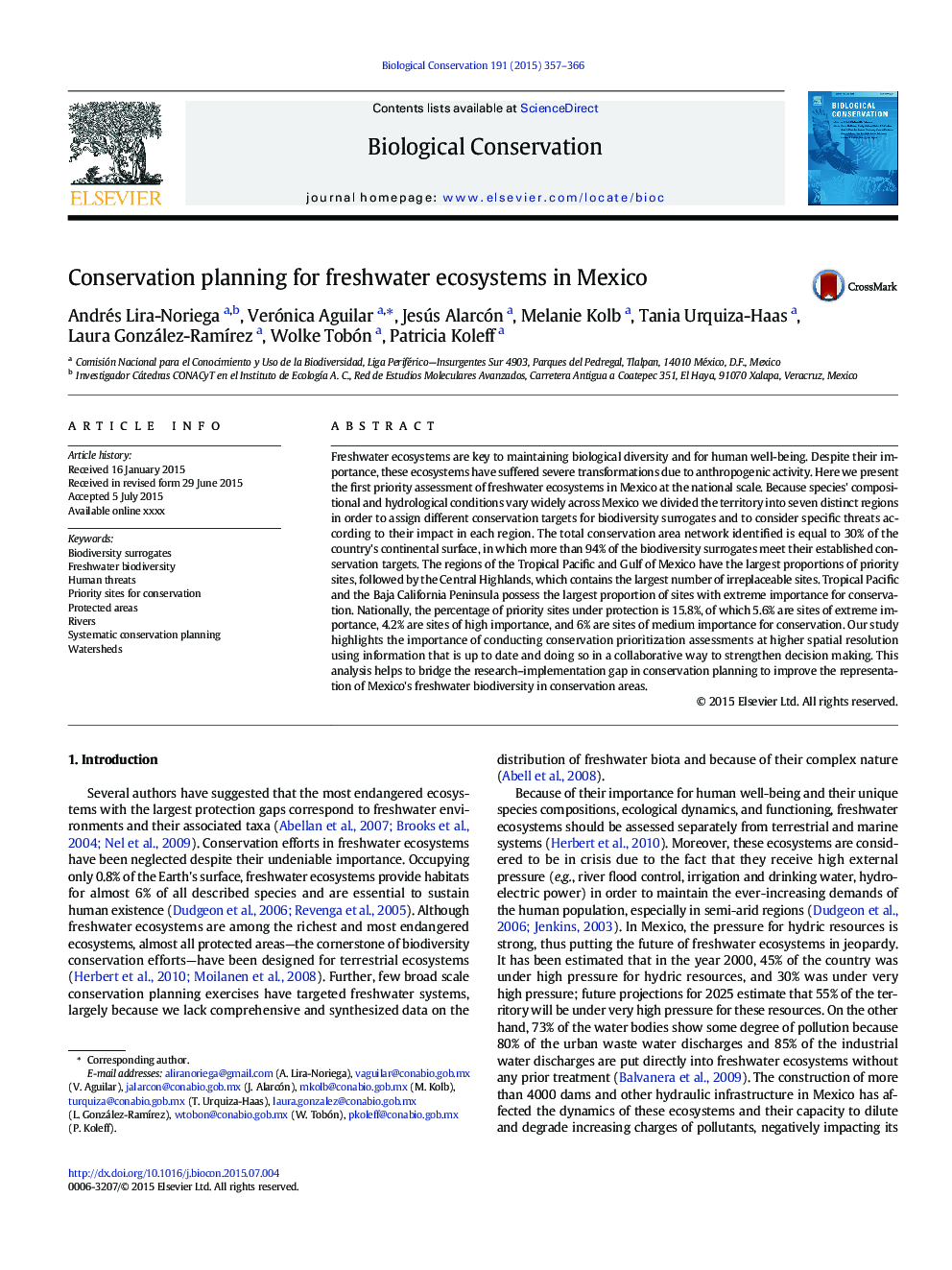| Article ID | Journal | Published Year | Pages | File Type |
|---|---|---|---|---|
| 6298987 | Biological Conservation | 2015 | 10 Pages |
Abstract
Freshwater ecosystems are key to maintaining biological diversity and for human well-being. Despite their importance, these ecosystems have suffered severe transformations due to anthropogenic activity. Here we present the first priority assessment of freshwater ecosystems in Mexico at the national scale. Because species' compositional and hydrological conditions vary widely across Mexico we divided the territory into seven distinct regions in order to assign different conservation targets for biodiversity surrogates and to consider specific threats according to their impact in each region. The total conservation area network identified is equal to 30% of the country's continental surface, in which more than 94% of the biodiversity surrogates meet their established conservation targets. The regions of the Tropical Pacific and Gulf of Mexico have the largest proportions of priority sites, followed by the Central Highlands, which contains the largest number of irreplaceable sites. Tropical Pacific and the Baja California Peninsula possess the largest proportion of sites with extreme importance for conservation. Nationally, the percentage of priority sites under protection is 15.8%, of which 5.6% are sites of extreme importance, 4.2% are sites of high importance, and 6% are sites of medium importance for conservation. Our study highlights the importance of conducting conservation prioritization assessments at higher spatial resolution using information that is up to date and doing so in a collaborative way to strengthen decision making. This analysis helps to bridge the research-implementation gap in conservation planning to improve the representation of Mexico's freshwater biodiversity in conservation areas.
Keywords
Related Topics
Life Sciences
Agricultural and Biological Sciences
Ecology, Evolution, Behavior and Systematics
Authors
Andrés Lira-Noriega, Verónica Aguilar, Jesús Alarcón, Melanie Kolb, Tania Urquiza-Haas, Laura González-RamÃrez, Wolke Tobón, Patricia Koleff,
